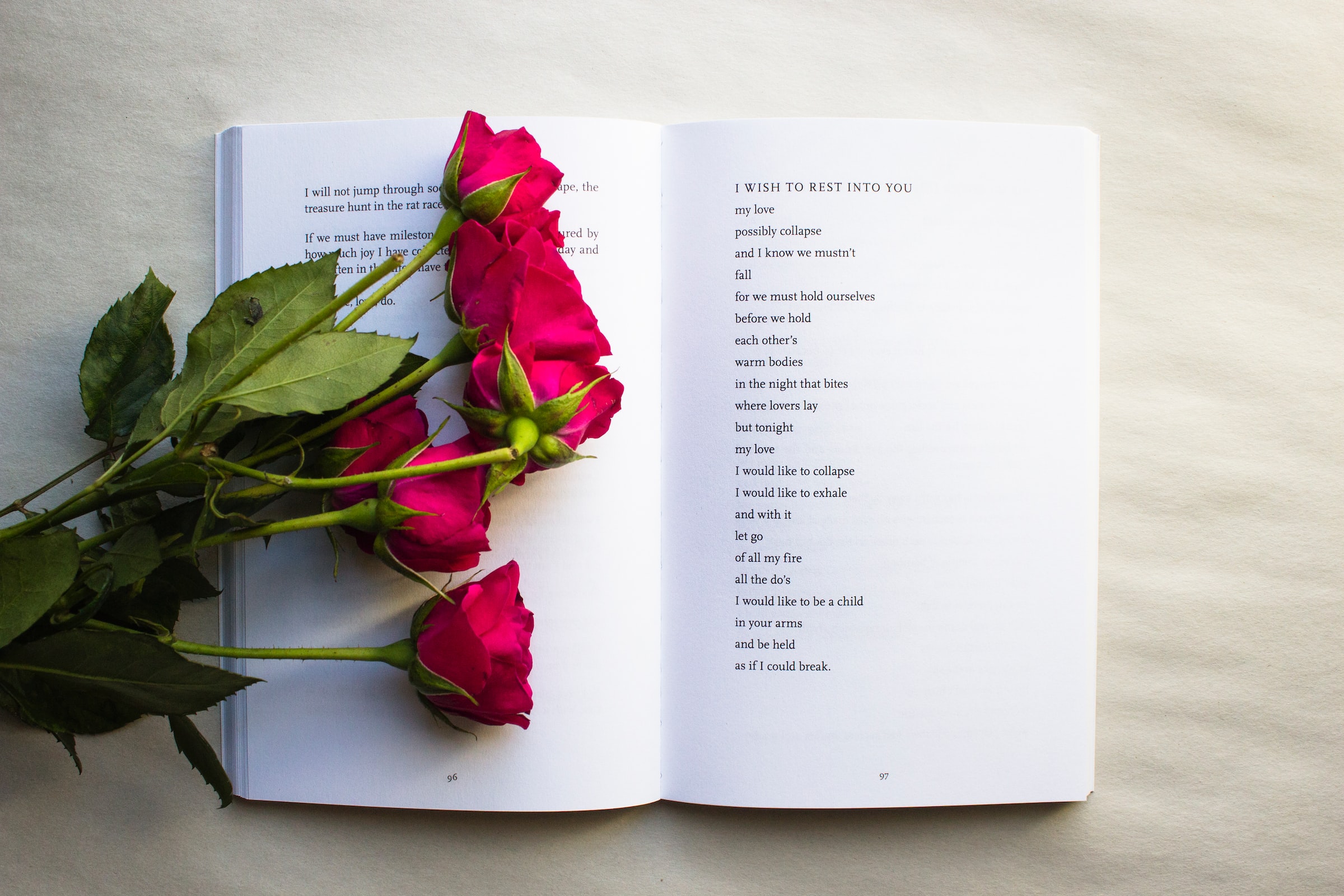
A poem is not just a series of lines and words. Like any art, poetry should be seen as a field with its own rules. Before you start writing, you need to know what poetry is. Use books and online resources to familiarize yourself with the different forms of poetry. Learn about how a poem should be read, perceived, and analyzed. Ask yourself about poetry as a form of expression.
Know that anyone can write a poem as long as you are both rigorous and imaginative. Remember that beyond words, a poem is a means of communication and expression that, as such, must convey a message and emotions. So, without further ado, let’s dive into this blog and learn some of our best tips for writing poems.
1. Drafting your poem

There are many resources available to help you understand the generalities of poetry. Don’t hesitate to read famous poets’ works to better understand the genre’s particularities. When you feel ready, start writing your first poem. Decide on your theme. Your only limit is your imagination.
You can write about anything that interests you, whether it’s a seemingly insignificant detail, a social issue of concern, a feeling, or a memory. Start with a simple theme. Many poems are inspired by nature, the weather, a person’s physical features, or the feeling of love. In this article, we will take the theme of the sea.
2. Choose the type of poem
Like all art, poetry is often subject to academic constraints. Fixed forms are imposed, but writing according to your inspiration is always possible. Nevertheless, if you choose a specific form, it is preferable to respect its structure as long as you are starting. Once you’ve mastered the basics, you’ll be able to break away from them. To begin, write a rhyming verse poem.
Poetry is the art of choosing and combining words to evoke a feeling or convey emotions. Through the rhymes, sounds, or images provoked by reading or listening to it, your poem should, above all, evoke feelings. In this perspective, grammatical rules are often secondary. They can even be twisted to make your poem more touching.
3. Describe your subject

Isolate one element of your theme that will be the subject of your poem. It can be a physical object, a landscape, an emotion, or a memory. Your poem will then be built in whole or in part around the description of this element. Make the first draft using simple questions. If you are writing about the sea, first define what this theme evokes in you. This could be a geographically defined sea, the sea in general, marine life, or even an ocean.
Describe the sea. Whether it is a real or fictional place, describe it based on your senses. Describe the movement of the waves, the smell of iodine, the sound of the waves against the hull of a boat, the shades, the depth, or the temperature of the water. Describe your impressions as well. For example, the changing color of the water, its cloudy appearance, the presence of foam, the increasing power of the waves, or the formation of a whirlpool can announce a storm.
Choose the most evocative elements for your subject. For example, to describe a seascape, you might include references to wildlife such as a school of fish, a pod of dolphins, or noisy gulls. If you want to evoke a past storm, you can talk about the lingering foam, the calm after the wind has died down, the rising sea level along the coast, or the boats breaking on the rocks. A poem on ecology might talk about trash destroying marine life, whale hunters being hunted by the Sea Shepherd, or toxic chemicals being dumped in the water.
4. Just write
Draft the first line. It introduces your poem and gives it its rhythm. It also determines your reader’s first impression. This opening line can even be crucial if you are reciting your poem to an audience, as they may lose interest if the opening words are not captivating enough. To get your audience’s attention, write a line that makes them want to continue reading your poem.
Be creative without losing your reader. They will turn away from your work if they are confused or overwhelmed. Create rhymes. The rhyming verse poem is the most familiar form. Two words rhyme when at least the last syllable sounds the same.
Try to find your own words. Ideally, you should avoid looking up your rhymes in dictionaries or online. You risk losing authenticity. Looking for words in your vocabulary allows you to express your emotions and your point of view. Your poem will be more effective and understandable. If you can’t find the right word, you can use a dictionary as a last resort.
Recite your lines aloud as you write them. Sound is essential in a poem. Therefore, reading it aloud will allow you to detect problems with rhythm, sound, or balance between lines. In a very strict form, all lines in a poem have the same number of feet. You can choose this very balanced structure or a version that mixes verses of different sizes. In our example, we have chosen only decasyllables or ten-foot verses.
Sound off in the comments section below, and tell us what you want to read next and if you want to read more about writing poetry.











